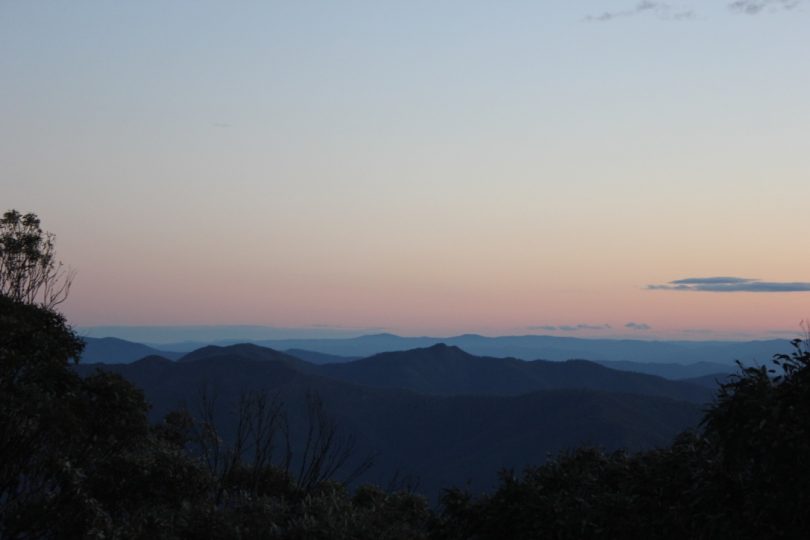No longer walking in a winter wonderland
Does climate change spell the end to Victoria’s alpine industry?
Kicker
This is a kicker.
Its the middle of winter but one of Victorias most popular alpine resorts, Mount Buller, is not completely covered in crisp, white snow.
The ground cover is patchy, even in the highest areas and on the drive up, theres no visible evidence of your destination until the altitude soars well above 1000 metres.
Rising average temperatures, increased rainfall, and unpredictable weather patterns deliver a poor prognosis for tourism operators in alpine environments. Luckily for the tourism operators, this has not caused a plunge in the number of visitors.
According to statistics from the Alpine Resorts Co\-ordinating Council, Mount Buller and its nature\-based counterpart, Mount Stirling have seen approximately half a million tourists bursting through the gates since the beginning of the season in early June.
In some weeks, the mountains have seen a 75 per cent increase in tourism from last year.
Its a staggering number and with the season set to continue until early September, staff are predicting its one of their best years yet.
While 2016 has brought a healthy dose of snowfall to the alps, its no indication next year will spell out the same prosperity.
Relying on the attraction of snow is not enough and Mount Buller have devised a strategy to counteract the threat of a diminishing industry.
Louise Perrin, Environmental Services Manager at Mount Buller and Mount Stirling says climate change has been on the management boards radar since 1990.
“There is a demise of the ski industry, theyre heading overseas for a more guaranteed option of snow.”
Since those early days, our planning and strategic work has been looking to make best use of the mountains year round, she said.
Traditionally, Victorias snow destinations have seen visitors come for recreational activities such as downhill skiing and snowboarding. Nowadays the majority of tourists are more interested in sightseeing.
There is a demise of the ski industry, theyre heading overseas for a more guaranteed option of snow, but alpine areas can still provide a great place for a first experience to see and to touch.
Perrin said once it was established overall tourism is not influenced by the amount of snow, the resort changed their tactics and focused on promoting the area in both the shoulder season and in summer months.
The plan is to have resorts focus on their strengths, regardless of the weather Ms Perrin said.
Further down the mountain, sub\-alpine areas along the Midland Highway are also affected by the changing environment.
Up to 60 per cent of businesses in the small town of Mansfield rely on snow\-related tourism.
Claire Wileman from the Mansfield District Business Association says while the town benefits most from tourism in the summer, there is no doubt certain traders, like ski hire businesses, will be negatively impacted by less snowfall.
As time goes by, well learn to adapt to no snow but it will be a transition and Im sure well see a drop in revenue.
Climate change comes in many forms. The risk of less snow is not the only concern for alpine regions and their surrounding towns.
The prevalence of bushfires in Victoria has increased and the dense population of snow gums and shrubbery on Mount Buller and Mount Stirling places the area at high\-risk, and this too influences tourism.
After Black Saturday in 2009 people were too frightened to come and camp in the area in fear of something similar happening again, Wileman said.
She said the dramatic and unprecedented drop in tourist numbers forced several businesses in the Mansfield district to close.
Dr Andrew King, a Climate Extremes Research Fellow at the University of Melbourne, echoes a similar sentiment about the future of Mount Buller.
Climate change is a big problem because with a small amount of warming, it becomes economically less viable to have a big ski industry in Australia, he said.
Weather systems are changing and cold fronts are less likely so instead of bringing snow, it brings rain.
Dr King says although the snow season will shrink in duration, haphazard weather means theres always a chance occasional cold snaps will create ideal conditions for snowfall.
For Louise Perrin, Mount Buller is always going to have enough charm to attract admirers locally and from afar.
Mother Nature has provided for this industry and for businesses to survive, but we might get to a point where thats not the case anymore, she said.
Its going be different but different shouldnt mean a death sentence.
Photo credit: Katie Coulthard
_Powered by Shorthand._

